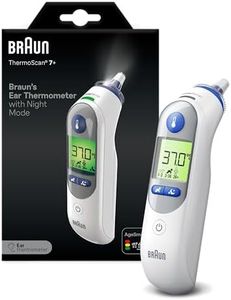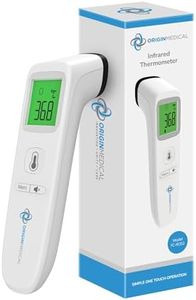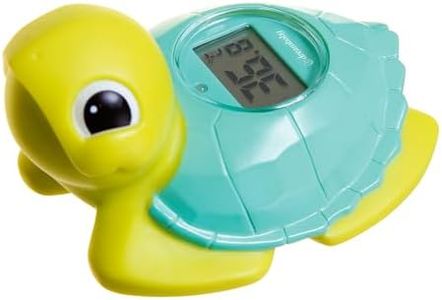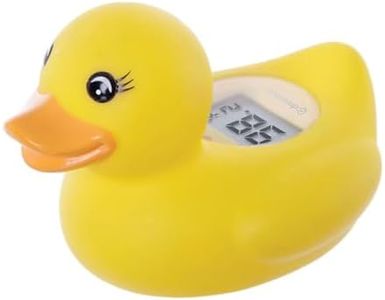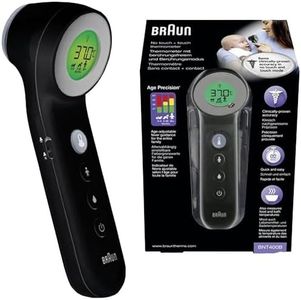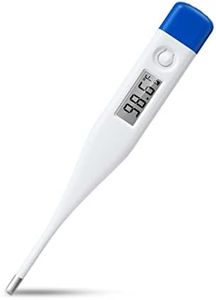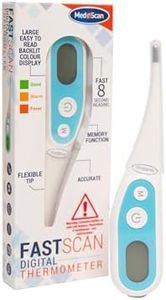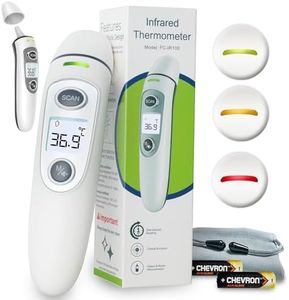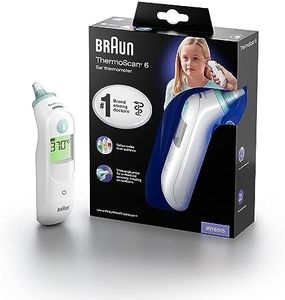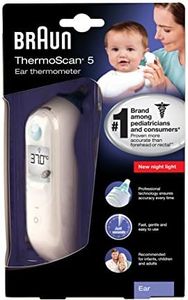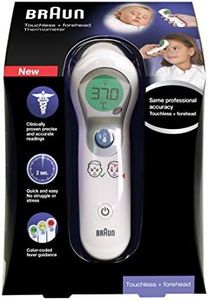We Use CookiesWe use cookies to enhance the security, performance,
functionality and for analytical and promotional activities. By continuing to browse this site you
are agreeing to our privacy policy
10 Best Toddler Thermometers
From leading brands and best sellers available on the web.Buying Guide for the Best Toddler Thermometers
Choosing the right thermometer for your toddler is important for both accuracy and ease of use. A good thermometer helps you quickly detect fever or monitor your child's health with minimal fuss or discomfort for your little one. Toddlers can be wiggly and sensitive, so selecting a thermometer that is quick, gentle, and reliable will make temperature checks much smoother for both child and caregiver. Think about your child’s temperament, typical behavior (especially when sick), and your preferences as a parent when narrowing down options.Type of ThermometerThis refers to the design and where the thermometer measures temperature—common types include digital stick (oral, underarm, rectal), ear (tympanic), and forehead (temporal artery) thermometers. The type often determines how comfortable, quick, and hygienic the reading will be. Stick thermometers can be very accurate but may be tricky with squirmy toddlers. Ear and forehead thermometers are faster and less invasive, making them popular for little kids, but they require proper technique for best results. Choose a type that matches your toddler’s comfort level and your preferred ease of use.
Speed of ReadingThis is how quickly the thermometer gives a result. Some thermometers deliver instant readings, while traditional ones may take up to a minute. For toddlers who dislike sitting still or are fussy when sick, a faster thermometer can make the process easier and less stressful. If your child is patient, a slower thermometer may still work, but most parents find quicker options more practical for young children.
Ease of CleaningToddlers may not always cooperate, and hygiene is especially important when taking repeated readings. Some thermometers are waterproof or have disposable probe covers, making them easier to clean after each use. Non-contact options, like forehead thermometers, reduce the risk of spreading germs. If you plan on frequent use or have more than one child, paying attention to how easily you can sanitize the thermometer is very helpful.
Accuracy and ConsistencyThis refers to how reliably the thermometer gives you the correct temperature. Some methods (rectal and oral) are considered most accurate, but may be uncomfortable or impractical with toddlers. Ear and forehead thermometers are usually accurate enough for home use if used correctly, though it's important to follow the instructions. If your child is ill often or you need precise readings for medical reasons, prioritize accuracy and read reviews on consistency before choosing.
Display and Ease of ReadingA clear, easy-to-read display makes checking your child’s temperature less confusing, especially late at night or in dim lighting. Look for thermometers with backlit screens and straightforward number displays. If you have trouble with small numbers or need quick confirmation, a bigger, well-lit screen will make your life easier.
Comfort and Suitability for AgeNot all thermometer types are equally comfortable or safe for very young children. For example, rectal thermometers are often advised for infants but may be a struggle with active toddlers. Forehead or ear thermometers cause less discomfort and make the process more toddler-friendly. Consider your child’s age, temperament, and ability to sit still when deciding which type will work best.
Additional FeaturesSome thermometers come with extras like fever alerts (light or sound notifications), memory for storing past readings, or silent modes for nighttime checks. While not strictly necessary, these can make your life easier and help track your child’s fever over time. If you value convenience and like to see trends, look for these user-friendly features.
